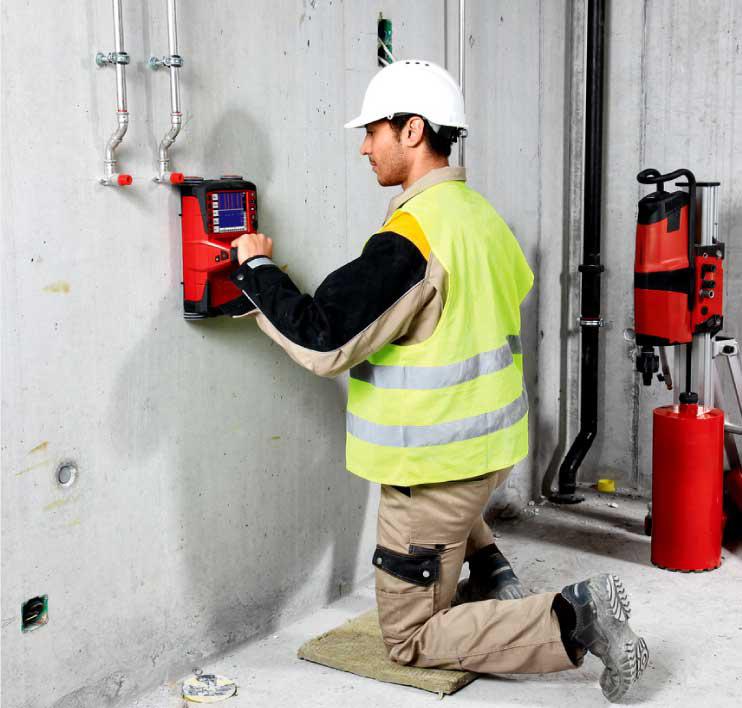RainierGPR Concrete Scanning: Key Insights for Successful Tasks
RainierGPR Concrete Scanning: Key Insights for Successful Tasks
Blog Article
Discovering the Depths: A Comprehensive Guide to Concrete Scanning and Its Diverse Applications
In the world of building and construction and infrastructure advancement, the careful procedure of concrete scanning holds a crucial duty in guaranteeing the structural stability and security of jobs. As innovation proceeds to advance, the applications of concrete scanning have actually increased far beyond simple surface-level assessments.
Relevance of Concrete Scanning
Recognizing the value of concrete scanning is critical in making sure the safety and security and stability of structures throughout construction and renovation projects. Concrete scanning utilizes innovative technologies such as ground-penetrating radar (GPR) and electro-magnetic induction to discover ingrained items, spaces, or various other anomalies within concrete structures.
Furthermore, concrete scanning plays a pivotal duty in making sure conformity with building regulations and guidelines that mandate the protection of existing structural parts during building and construction activities. By precisely drawing up the internal composition of concrete, scanning modern technologies allow building and construction professionals to make informed choices that support the architectural security and toughness of structures and infrastructure jobs. Essentially, the significance of concrete scanning lies in its capacity to protect both the architectural honesty and the personnel associated with construction ventures.
Technologies Made Use Of in Concrete Scanning
Concrete scanning relies on innovative technologies such as ground-penetrating radar (GPR) and electro-magnetic induction to precisely identify ingrained objects and anomalies within concrete structures. Ground-penetrating radar runs by sending out high-frequency electromagnetic waves right into the concrete.
Electromagnetic induction, on the other hand, functions by generating electromagnetic areas around a concrete framework through a transmitter coil. When metal items exist within the concrete, they disrupt these magnetic fields, causing eddy currents to move via the metal. By measuring the changes in the electromagnetic areas with a receiver coil, the system can pinpoint the area of metal things in the concrete.
These sophisticated modern technologies play a crucial duty in non-destructive testing, making certain the safety and security and stability of concrete frameworks in numerous markets.
Applications in Construction Sector
Within the construction sector, concrete scanning modern technology discovers diverse applications that enhance project efficiency and safety. Furthermore, concrete scanning is utilized for locating spaces, such as air pockets or locations of damage within concrete, which can jeopardize the company website total stamina of a structure. Concrete scanning plays a critical duty in high quality control by validating the density of concrete covers over support, making certain conformity with style specifications and standards.

Safety Advantages of Concrete Scanning
In the realm of building and construction security, the execution of concrete scanning technology provides a paramount benefit in preemptively recognizing potential risks and strengthening structural stability. straight from the source By making use of advanced scanning methods such as ground-penetrating radar (GPR) and electro-magnetic induction, building groups can properly situate rebar, post-tension cable televisions, avenues, and other covert items within concrete frameworks. This aggressive approach dramatically reduces the risk of unintentional strikes during drilling, cutting, or coring activities, thus preventing expensive problems, injuries, and task hold-ups.
Furthermore, concrete scanning enhances employee security by providing real-time details concerning the structural condition of concrete components. By dealing with potential safety and security issues without delay, concrete scanning contributes to developing a safe working setting and reducing the likelihood of structural failures or mishaps on construction websites.
Future Trends in Concrete Scanning
Emerging improvements in scanning technology are poised to reinvent the area of concrete inspection and analysis. By taking advantage of the power of AI, these systems can analyze huge quantities of information gathered throughout scanning processes to offer more thorough and precise insights into the condition of concrete structures.
One more considerable fad is the growth of even more user-friendly and portable scanning tools. Miniaturization of scanning devices enables simpler access to confined rooms and remote locations, making inspections more extensive and effective. Additionally, visit this web-site developments in wireless interaction modern technologies enable real-time information transfer and evaluation, helping with quicker decision-making processes.
Moreover, there is a growing concentrate on sustainability in concrete scanning innovations - RainierGPR Concrete Scanning. Makers are progressively incorporating environment-friendly materials and energy-efficient features right into their tools to minimize ecological effect. These future trends are readied to improve the effectiveness, accuracy, and sustainability of concrete scanning techniques, shaping the market's future landscape
Conclusion
In verdict, concrete scanning plays an important duty in the construction market by making certain the security and effectiveness of various projects. As technology breakthroughs, the future of concrete scanning holds appealing developments for improving building processes.

Report this page